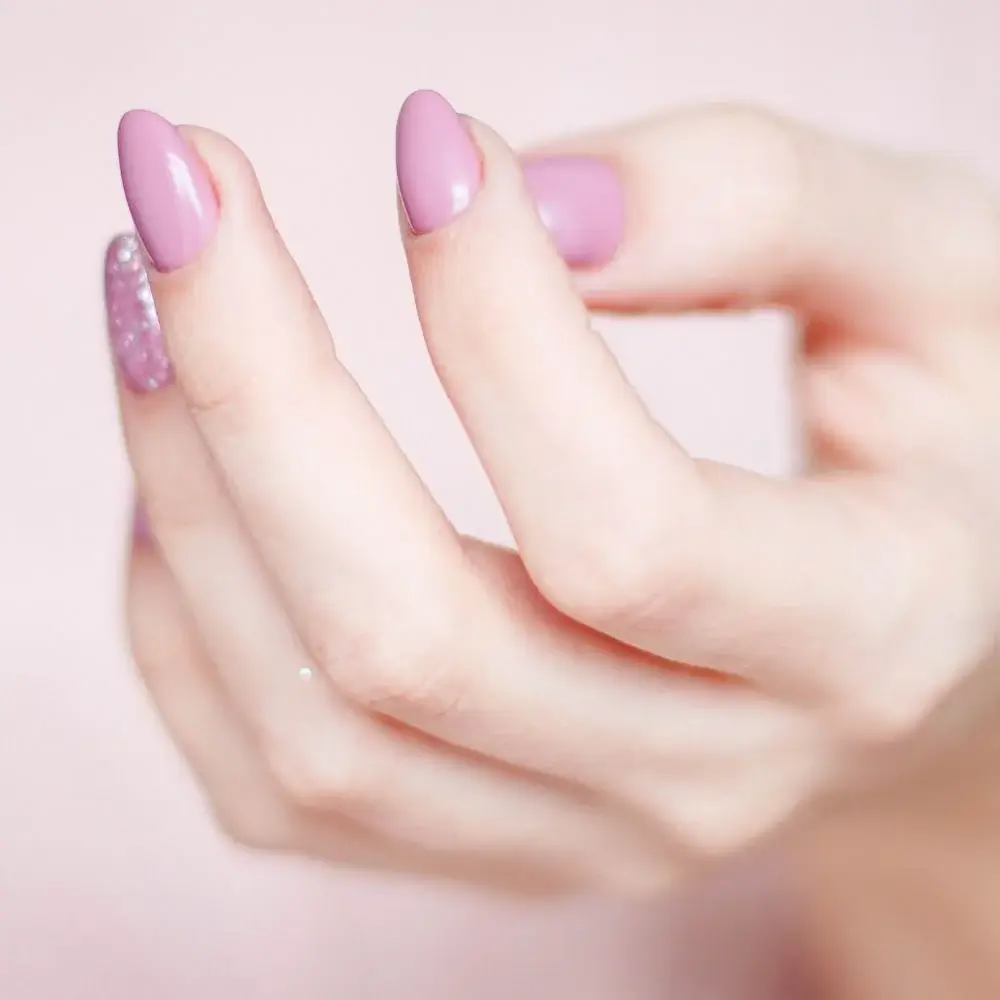Nail glue is a quick-fix solution for beauty-conscious women who love having well-manicured hands. However, many of us often wonder if nail glue can be used to repair broken nails. If you're one of those, you're in the right place. This blog will delve deep into the topic and discover whether nail glue can remedy broken nails.
Understanding Nail Glue:
Nail glue is an adhesive solid substance with a quick-drying formula. It primarily attaches artificial nails or nail extensions to natural nails. It is also used to fix broken nails or fill the gaps between them. However, it is essential to understand that nail glue is not a permanent solution to fix broken nails.
The Right Way to Use Nail Glue for Broken Nails:/
If you have a broken nail, you should first clean it properly with soap and water. Dry it thoroughly and apply a coat of clear nail polish to prevent further damage. Once the nail polish has dried, you can apply a tiny amount of glue to the broken edge of the nail and press it gently with the other half. Hold it for a minute or two until the glue dries completely.
The Risks Involved:
While many women use nail glue to fix broken nails, it is not always safe. Nail glue can be harmful if ingested, and it can be toxic if applied to the skin. Moreover, applying too much nail glue can create a gap between the natural and artificial nails, leading to an infection. Therefore, it is essential to exercise caution while using nail glue to repair broken nails.
Alternatives to Nail Glue:
If you're hesitant to use nail glue to fix your broken nails, then worry not, as alternatives are available. You can use a tea bag to cover the broken area and apply a topcoat to hold it in place until the nail grows out. You can also use a clear nail wrap or silk wrap to cover the broken area, protecting your nail and preventing further damage.
Prevention is Better than Cure:
Taking preventive measures to avoid broken nails is always better. Please avoid using your nails as tools, and keep them well-trimmed. Use gloves while washing dishes or doing household chores, and avoid using harsh chemicals on your nails. You can also strengthen your nails by taking vitamin supplements and using nail strengtheners.
Nail glue can be used to fix broken nails, but it should be used cautiously and only as a temporary solution. It is always better to take preventive measures to avoid broken nails and keep your natural nails healthy and strong. And if you do end up with a broken nail, you can always turn to alternatives like tea bags and nail wraps to fix the problem without any harmful effects.
Finding the best nail glue can be a real hassle. With so many products on the market, it can be challenging to determine which one will best suit your needs. Luckily, with a bit of research, you can find the perfect solution for you. Once you have found the best nail glue for you, it can make all the difference. No more worrying about chips and breaks - your nails will stay flawless for days! So why wait? Follow the link and discover your new favorite nail glue today. Your nails will thank you!
What are the steps to properly apply nail glue for the best results?
To achieve the best results when using nail glue, it's crucial to follow a meticulous process. Begin with clean, dry nails, ensuring no residual nail polish or moisture. Apply a small, pea-sized amount of glue directly onto your natural nail, tip, or extension. Precision is critical; avoid excessive glue to prevent messy spills. Gently but firmly press the nail tip onto your natural nail, holding it securely for a few seconds to allow for proper bonding. Pay special attention to even distribution across the nail. After bonding, use a nail file to shape and smooth the edges.

What are some tips for ensuring a long-lasting bond with nail glue?
Achieving a long-lasting bond with nail glue involves careful preparation and attention to detail. Start by gently buffing the surface of your natural nails to remove any oils that can hinder adhesion. Apply the nail glue sparingly, focusing on the edges and the center of the nail for the strongest hold. When attaching the nail tip or extension, ensure precise alignment from the cuticle area and press it down gently to prevent shifting. Avoid bending or flexing your nails excessively during curing, as this can weaken the bond.

What are some ways to ensure nail glue doesn't dry out prematurely?
Preventing premature drying of nail glue is crucial for extending its shelf life and maintaining usability. Permanently securely close the cap when not in use to keep your glue in optimal condition. Store the glue in a cool, dry place, away from direct sunlight and heat sources, as elevated temperatures can cause the glue to thicken and become less effective. If you notice the glue thickening or becoming less fluid over time, you can use a pin or needle to clear the nozzle, ensuring a smooth application. It's also important to regularly check the expiration date on the product to ensure it performs as expected.

How do I avoid smudging or misalignment when bonding nails with glue?
Smudging or misalignment when bonding nails can be frustrating, but with careful execution, you can avoid these issues. Start by applying glue only to your natural nail or the tip, avoiding contact with your skin to prevent smudging. When attaching the nail tip or extension, take your time to ensure accurate alignment, beginning from the cuticle area and moving toward the tip. Gently press the nail down without applying excessive pressure, as this can cause misalignment or shifting. If any excess glue does squeeze out during the bonding process, swiftly and delicately remove it with a clean brush or a cotton swab dipped in nail polish remover.

How should I clean and maintain my nail glue applicator brush?
Properly maintaining your nail glue applicator brush ensures consistent and precise application. To clean the brush, use acetone or nail polish remover to dissolve any dried glue residue. Be gentle when brushing the bristles to avoid damage. A soft toothbrush can help remove any remaining residue. Rinse the brush thoroughly with warm water to remove any remaining cleaning solution and glue residue. Allow it to air dry completely before storing it in a clean, dry place to prevent contamination.
Should I remove and reapply nail glue periodically for nail health?
Avoid frequent removal and reapplication of nail glue, as this process can weaken your natural nails over time. Frequent removal can lead to thinning and damage to the nail plate. Instead, monitor the condition of your nails regularly and only reapply glue when necessary. Instances where reapplication may be required include if a nail tip becomes loose or if visible signs of damage, such as cracks or chips, are present. To promote nail health, focus on proper initial application and maintenance, which can help minimize the need for frequent reapplication while keeping your nails in excellent condition.







